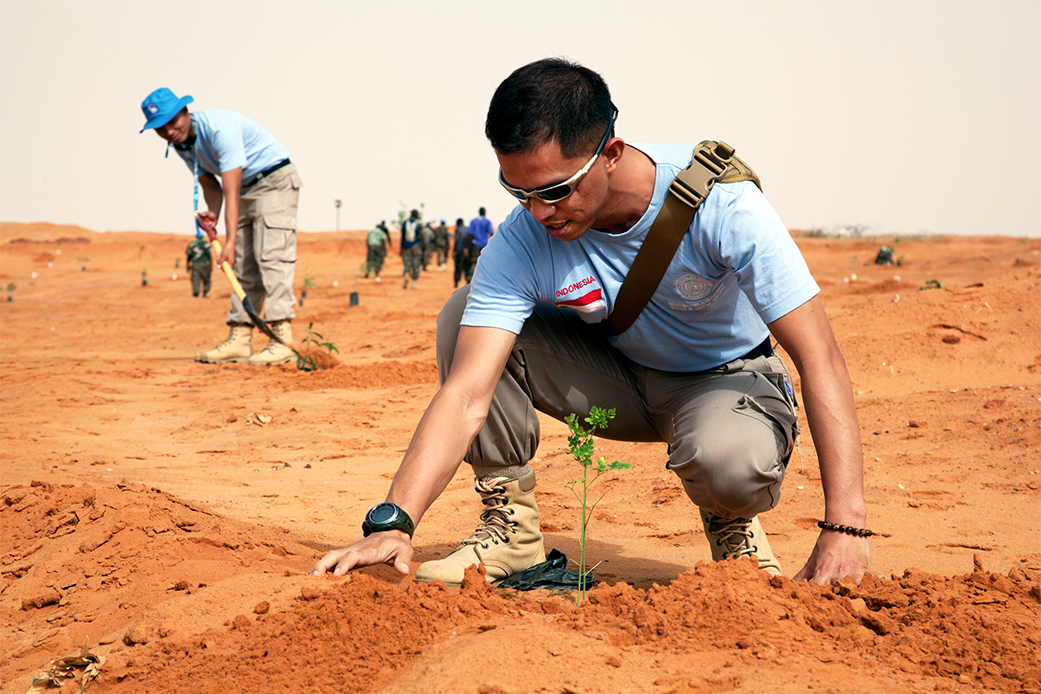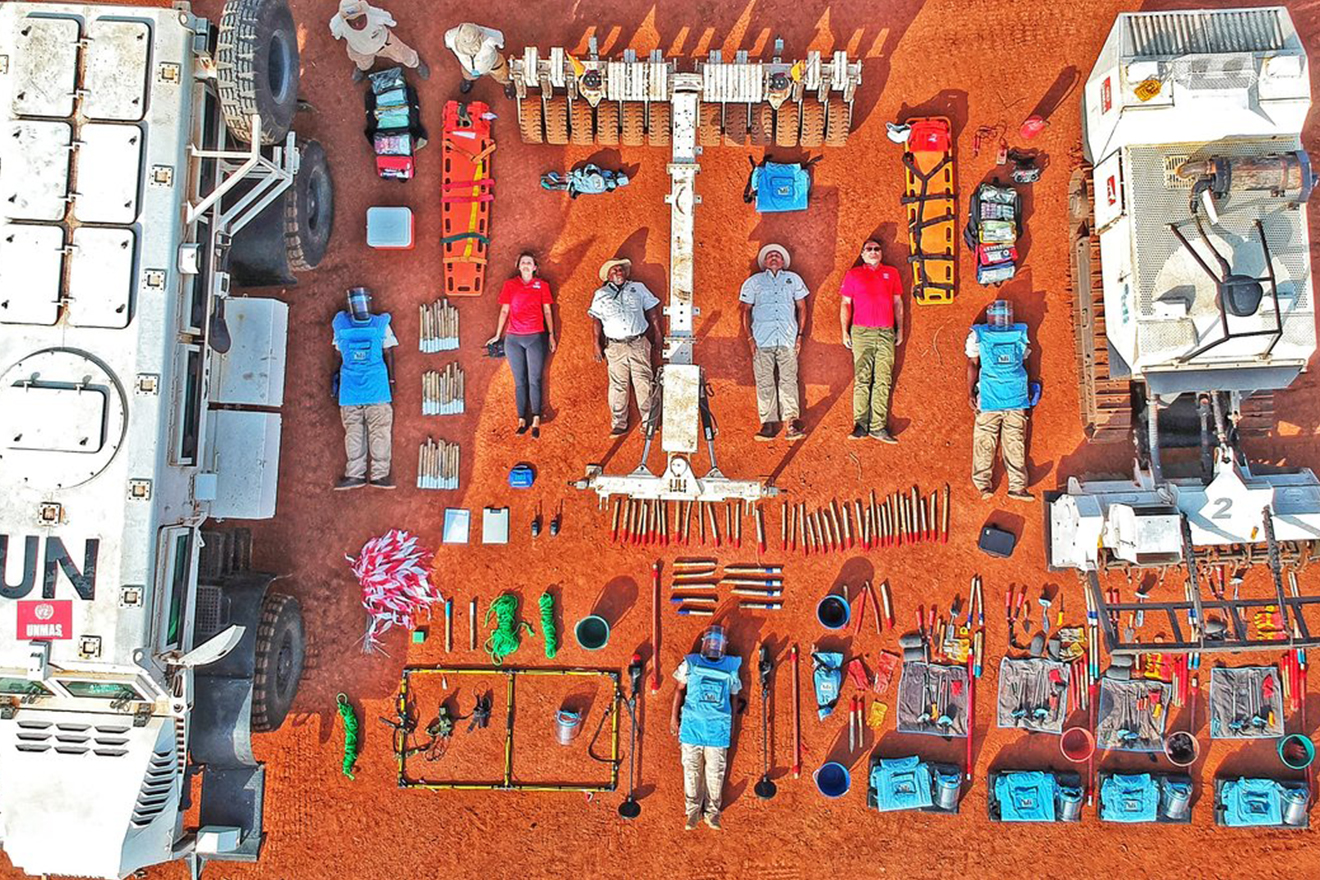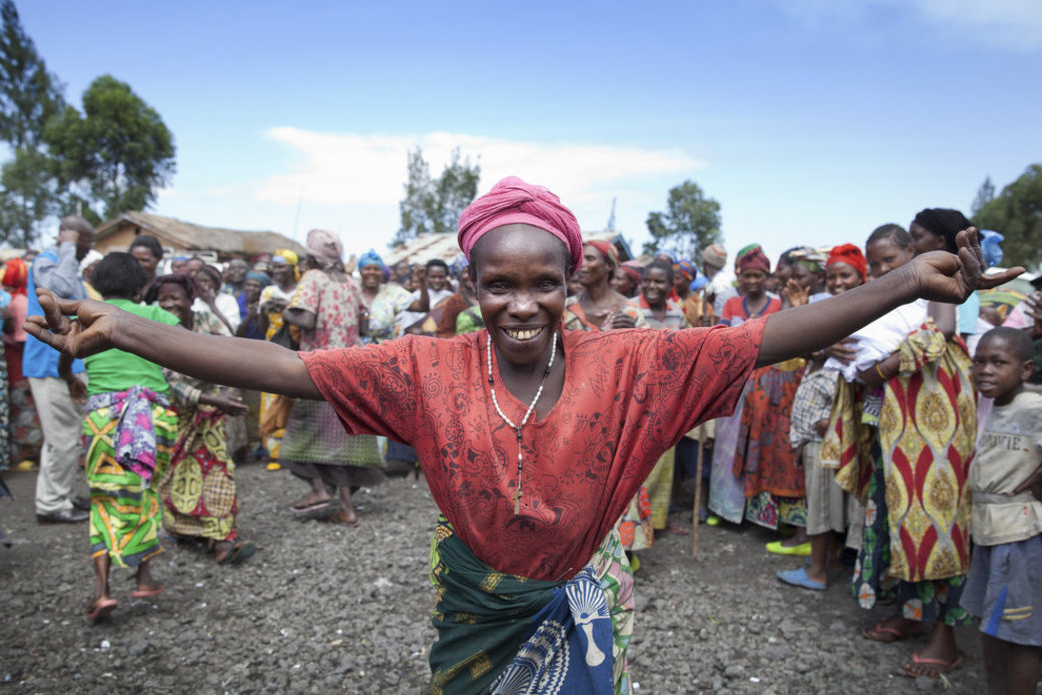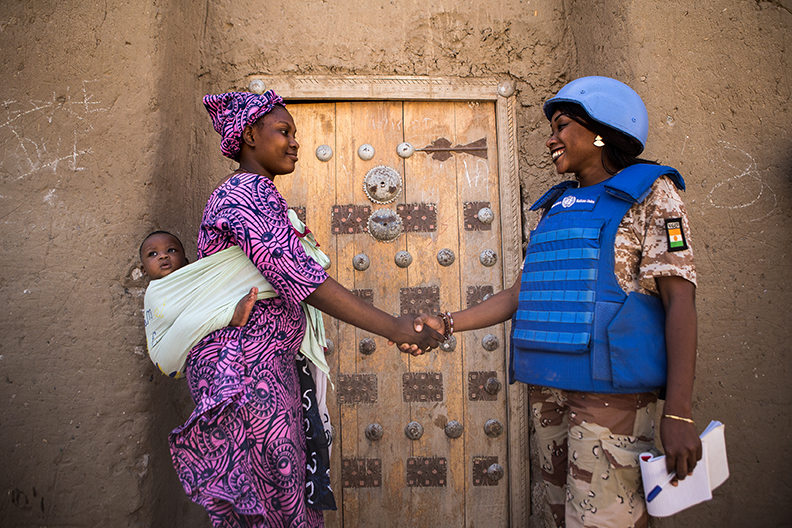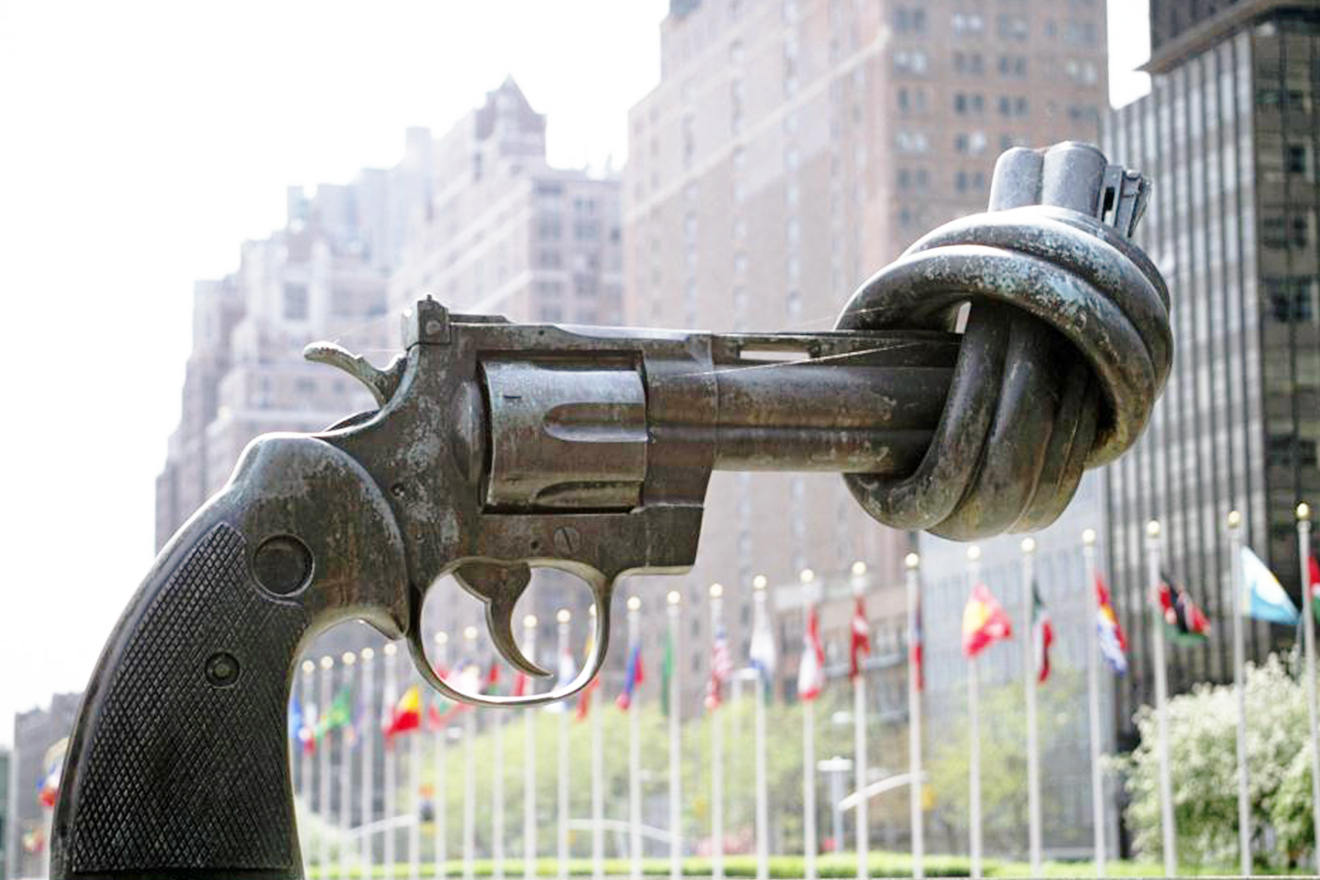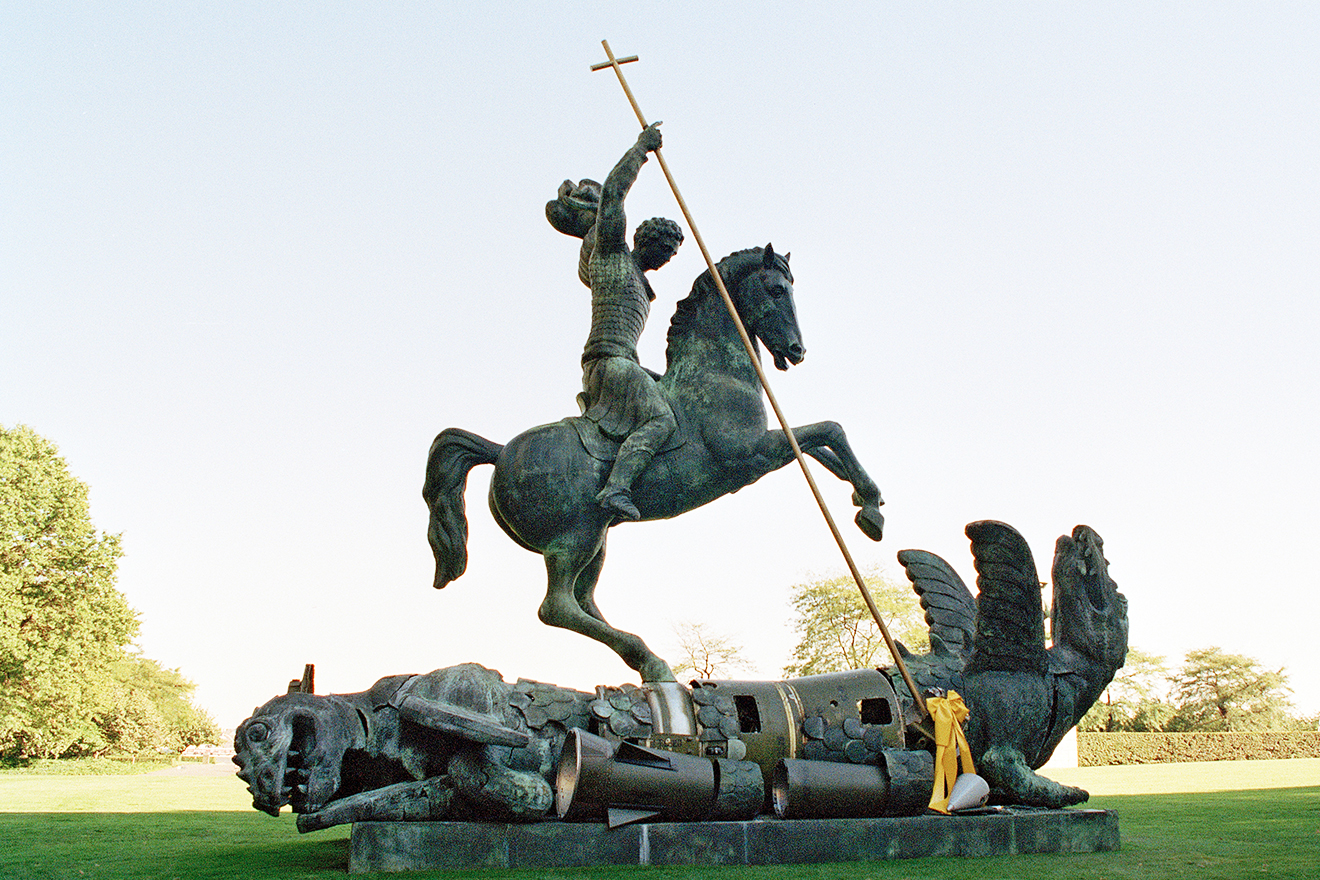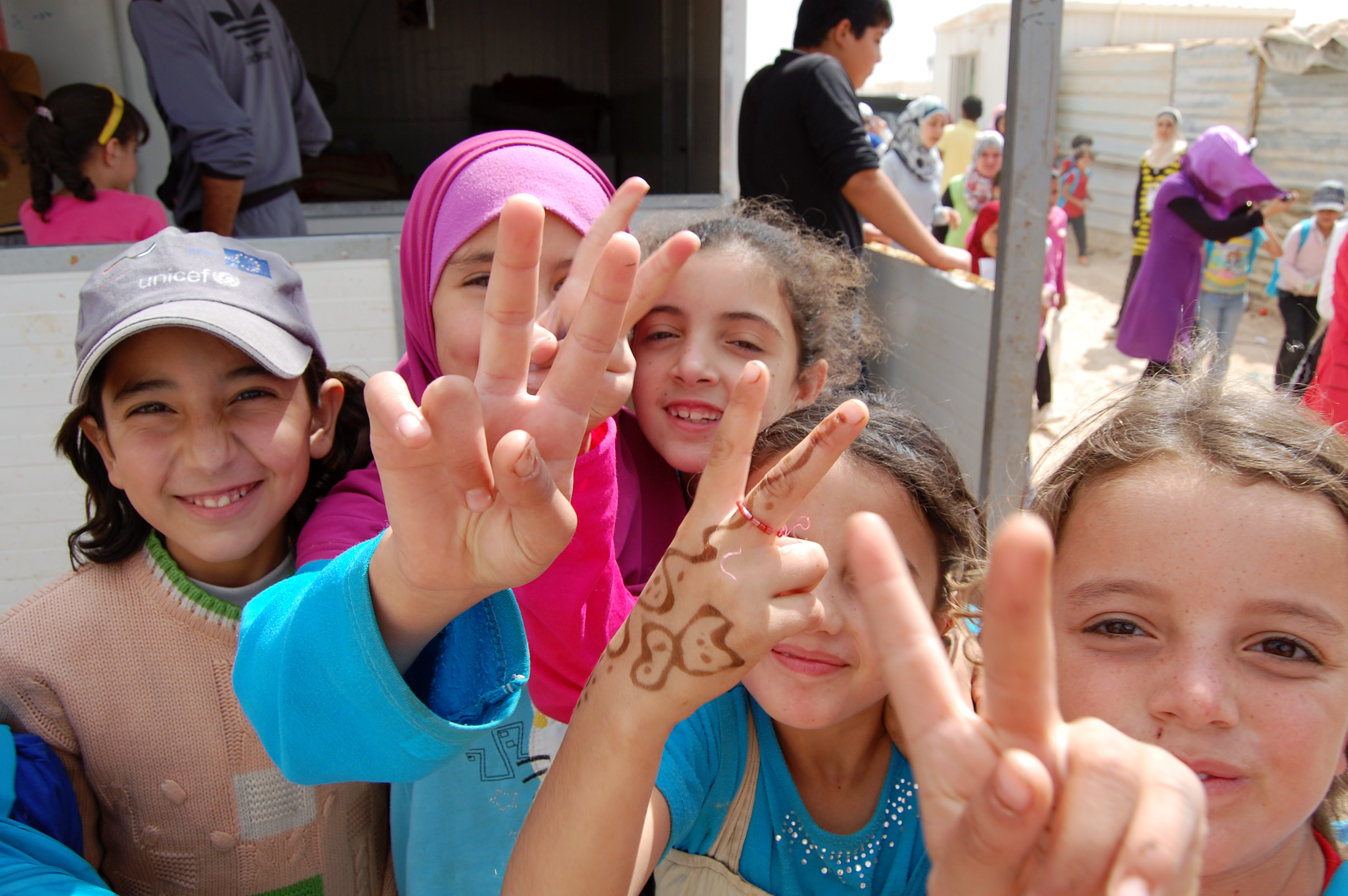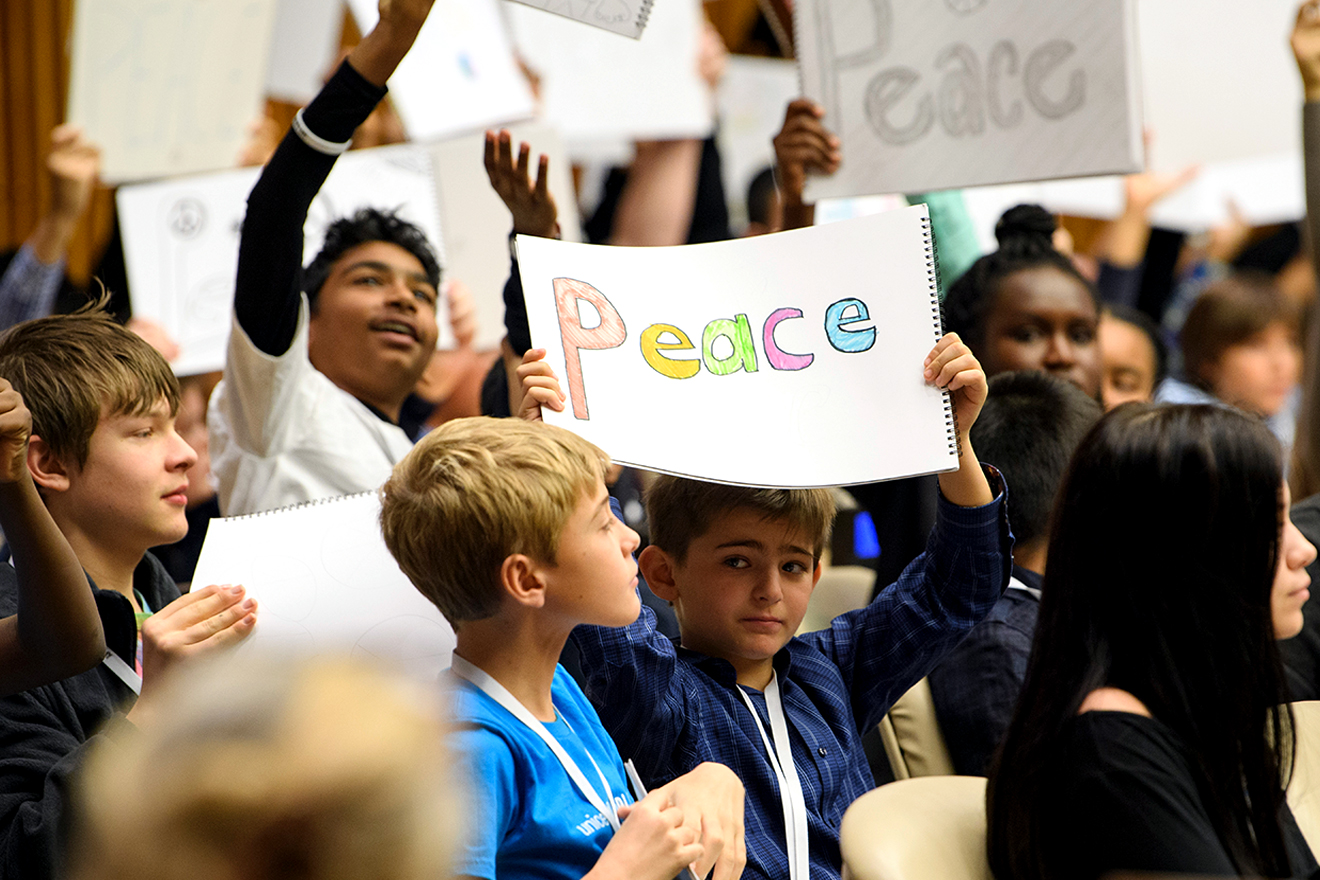The United Nations attaches great importance to ensuring that action on the environment is part of conflict prevention, peacekeeping and peacebuilding strategies, because there can be no durable peace if the natural resources that sustain livelihoods and ecosystems are destroyed. On 5 November 2001, the UN General Assembly declared 6 November of each year as the International Day for Preventing the Exploitation of the Environment in War and Armed Conflict.
和平与安全
It is well known that violent conflict disproportionately affects women and girls and intensifies pre-existing gender inequalities and discrimination. Women are also active agents of peace in armed conflict, yet their role as key players and change agents of peace has been largely unrecognized. Security Council Resolution 1325 (2000) was the first resolution that acknowledged the contributions women and girls make to conflict prevention, peacekeeping, conflict resolution and peacebuilding and highlighted the importance of their equal and full participation. Since then, the Security Council meets every year on the anniversary of its adoption, 31 October.
Schools in Torodi, in the Tillabery region of Niger, have been the target of violent attacks, which have prevented children from exercising their right to education.
Ten years ago, the UN Security Council established the mandate of the Special Representative of the Secretary-General on Sexual Violence in Conflict. Conflict-related sexual violence is no longer seen as an inevitable byproduct of war, but rather a crime that is preventable and punishable under International Law. It is also essential to recognize and tackle gender inequality as the root cause and driver of sexual violence, in times of war and peace and to provide multidimensional services for survivors.
The 2nd of October is the birthday of Mahatma Gandhi, leader of the Indian independence movement and pioneer of the philosophy and strategy of non-violence. The 2nd of October is also The International Day of Non-Violence. The principle of non-violence (also known as non-violent resistance) rejects the use of physical violence in order to achieve social or political change. Often described as "the politics of ordinary people," this form of social struggle has been adopted by people all over the world in campaigns for social justice.
As the only weapons with potentially existential consequences, nuclear weapons pose a grave threat to human security. The only sure way to eliminate the threat posed is to eliminate the weapons themselves.
In UN Secretary-General António Guterres's words: "Today peace faces a new danger: the climate emergency, which threatens our security, our livelihoods and our lives. That is why it is the focus of this year’s International Day of Peace [21 September]. And it’s why I am convening a Climate Action Summit [23 September]." Climate change causes clear threats: natural disasters displace 3 times as many people as conflicts; the salinization of water and crops is endangering food security; and the impact on public health is escalating. Growing tensions over resources and mass movements of people are affecting every country on every continent.
On 13 September, under the theme “Empowering and Transforming Humanity,” the UN marks the 20th anniversary of the adoption of the Declaration and Programme of Action on a Culture of Peace. The high-level forum, organized by the President of the 73rd session of the General Assembly, focuses on increasing the chances of a sustainable pathway to a culture of peace to achieve the 2030 Agenda. The Culture of Peace is seen as a process of individual, collective and institutional transformation. The Declaration, considered one of the most significant legacies of the UN, is a universal and historic norm-setting document
- « first
- ‹ previous
- 1
- 2
- 3

